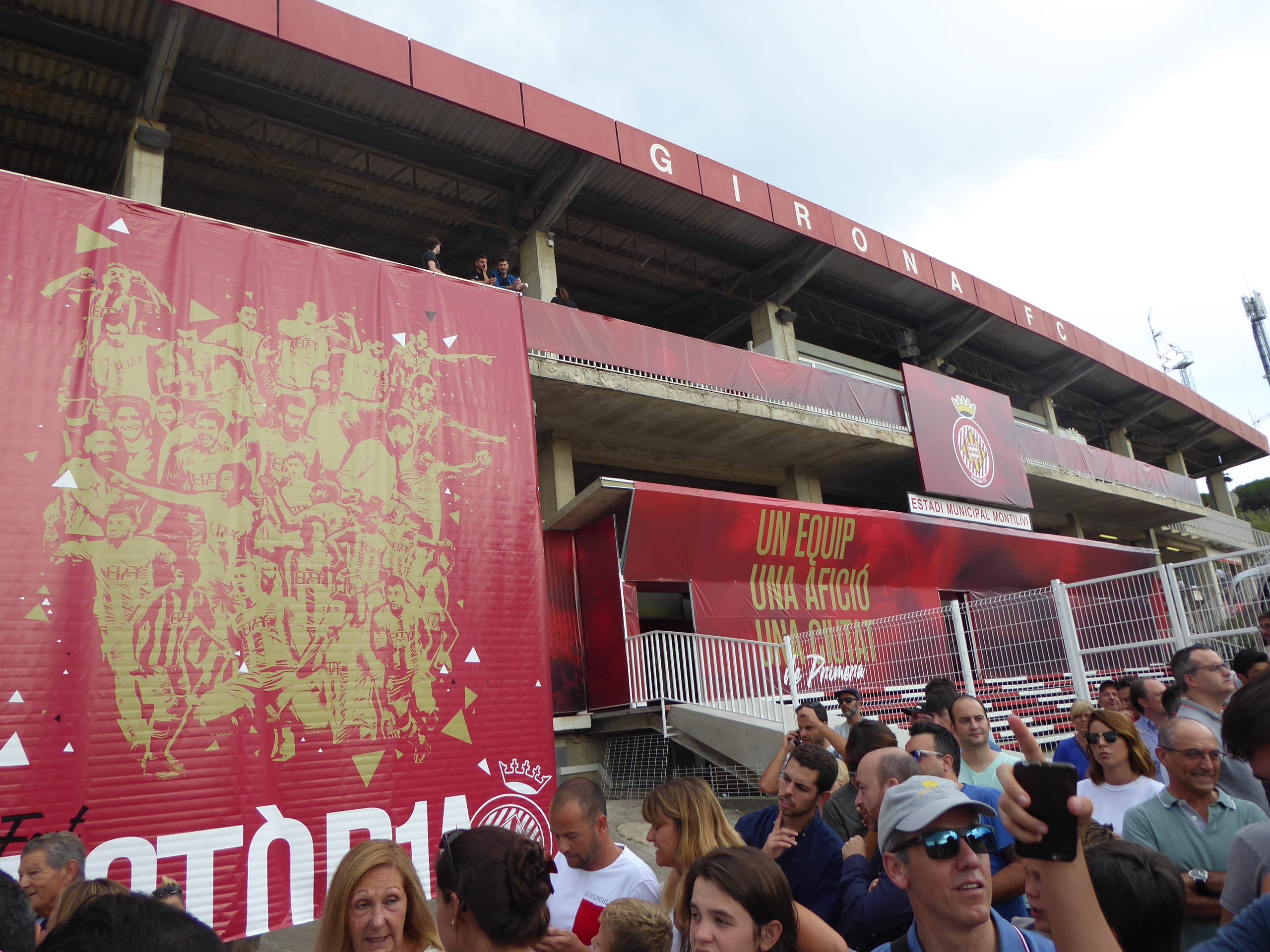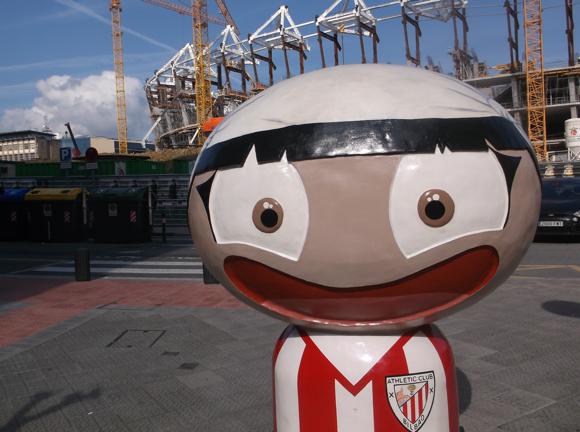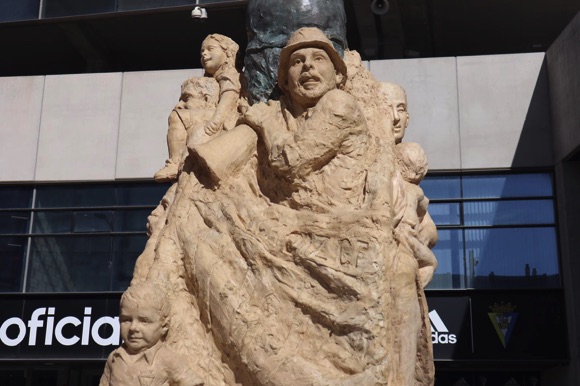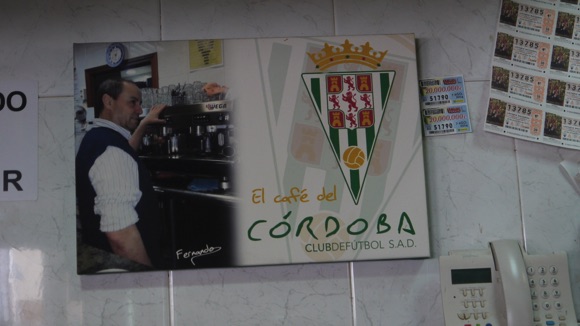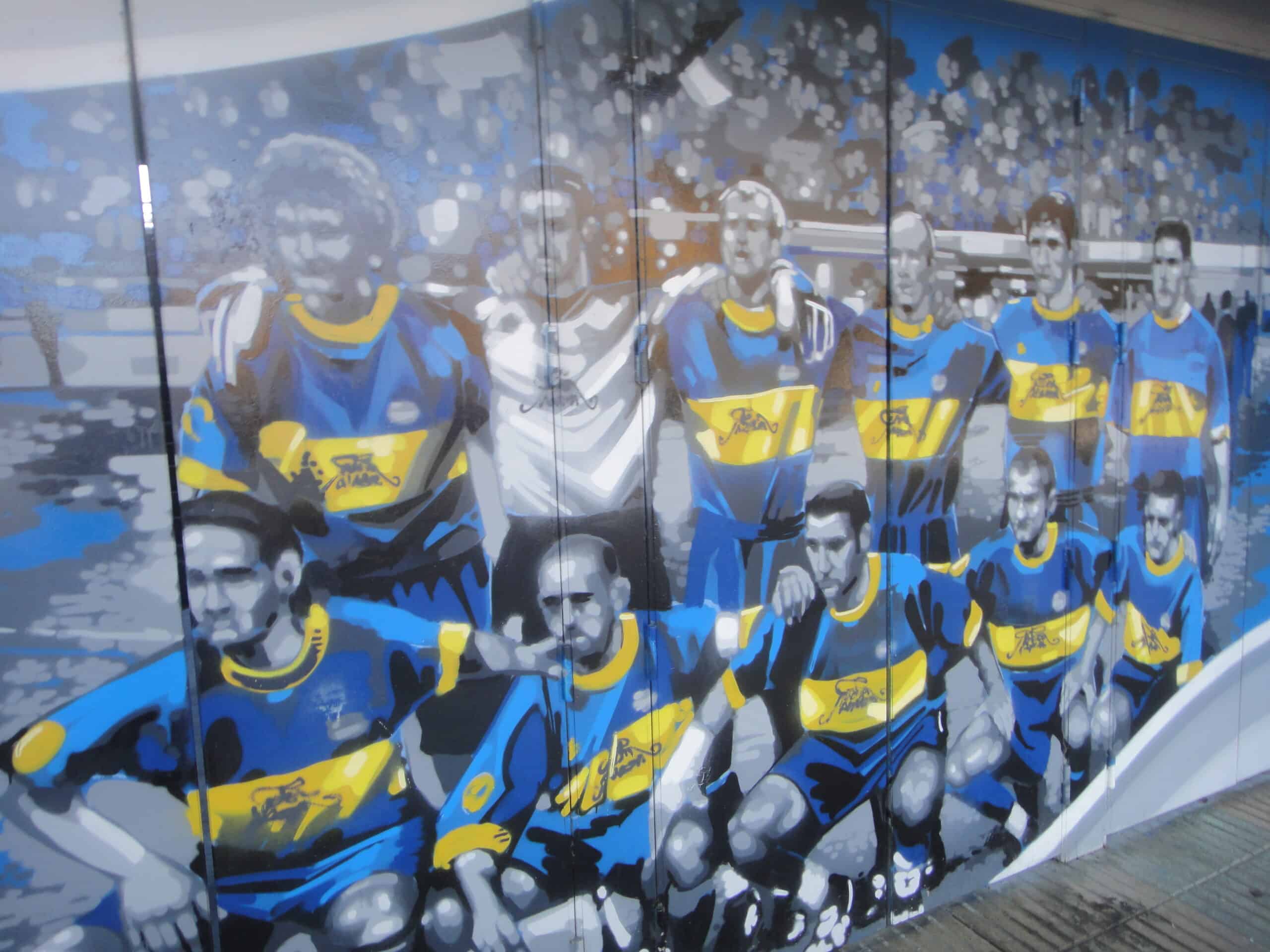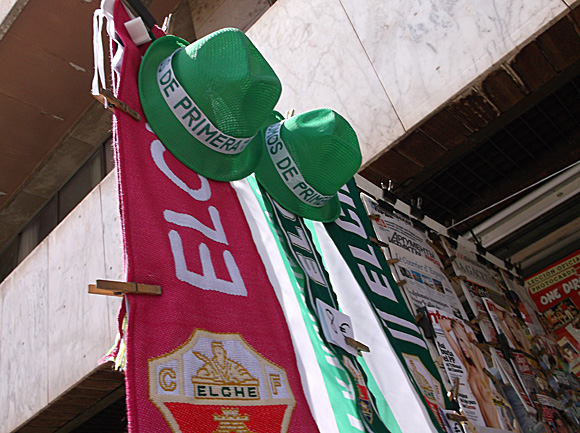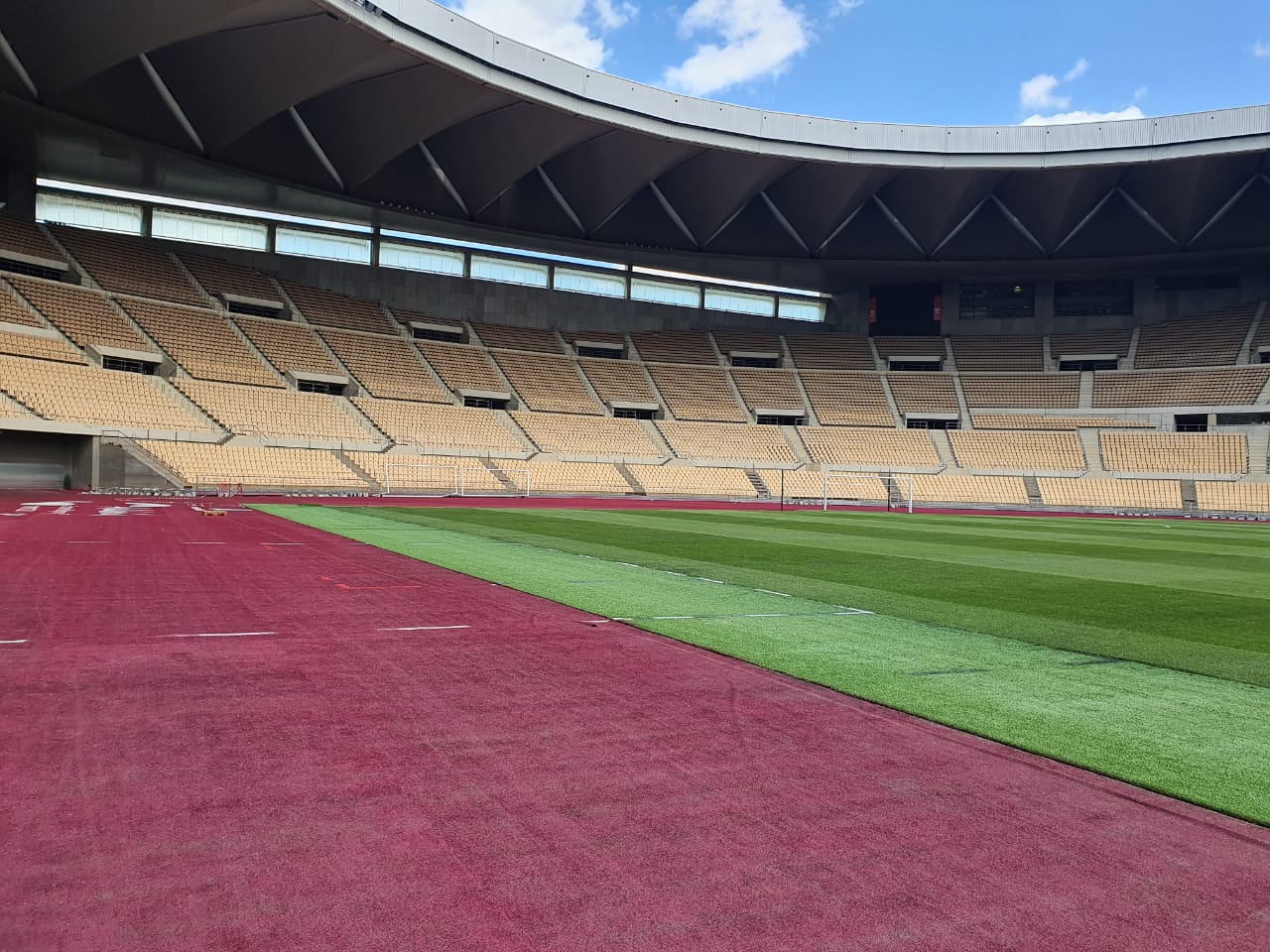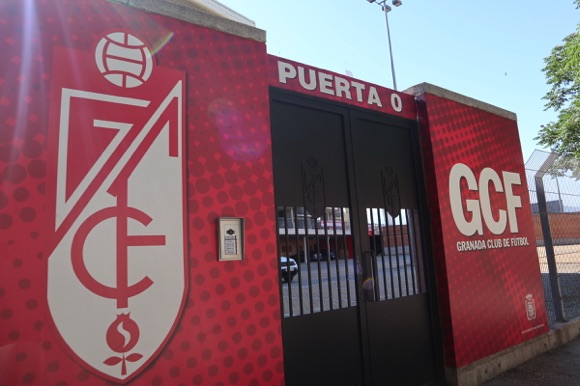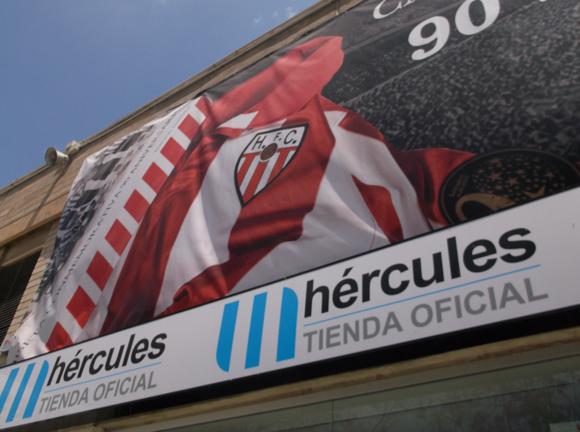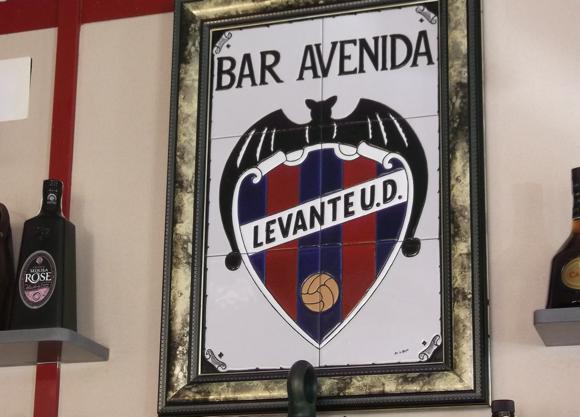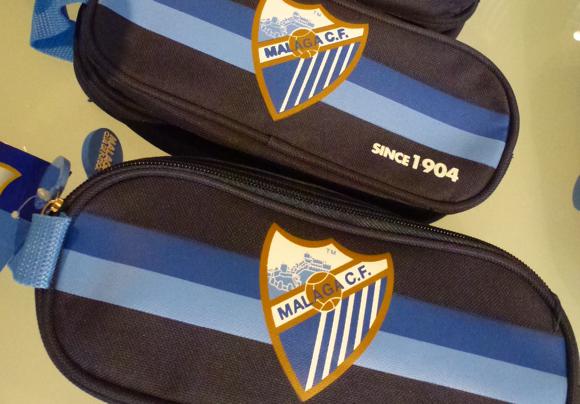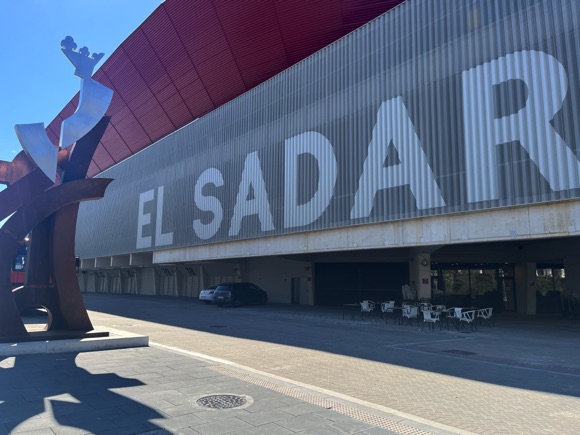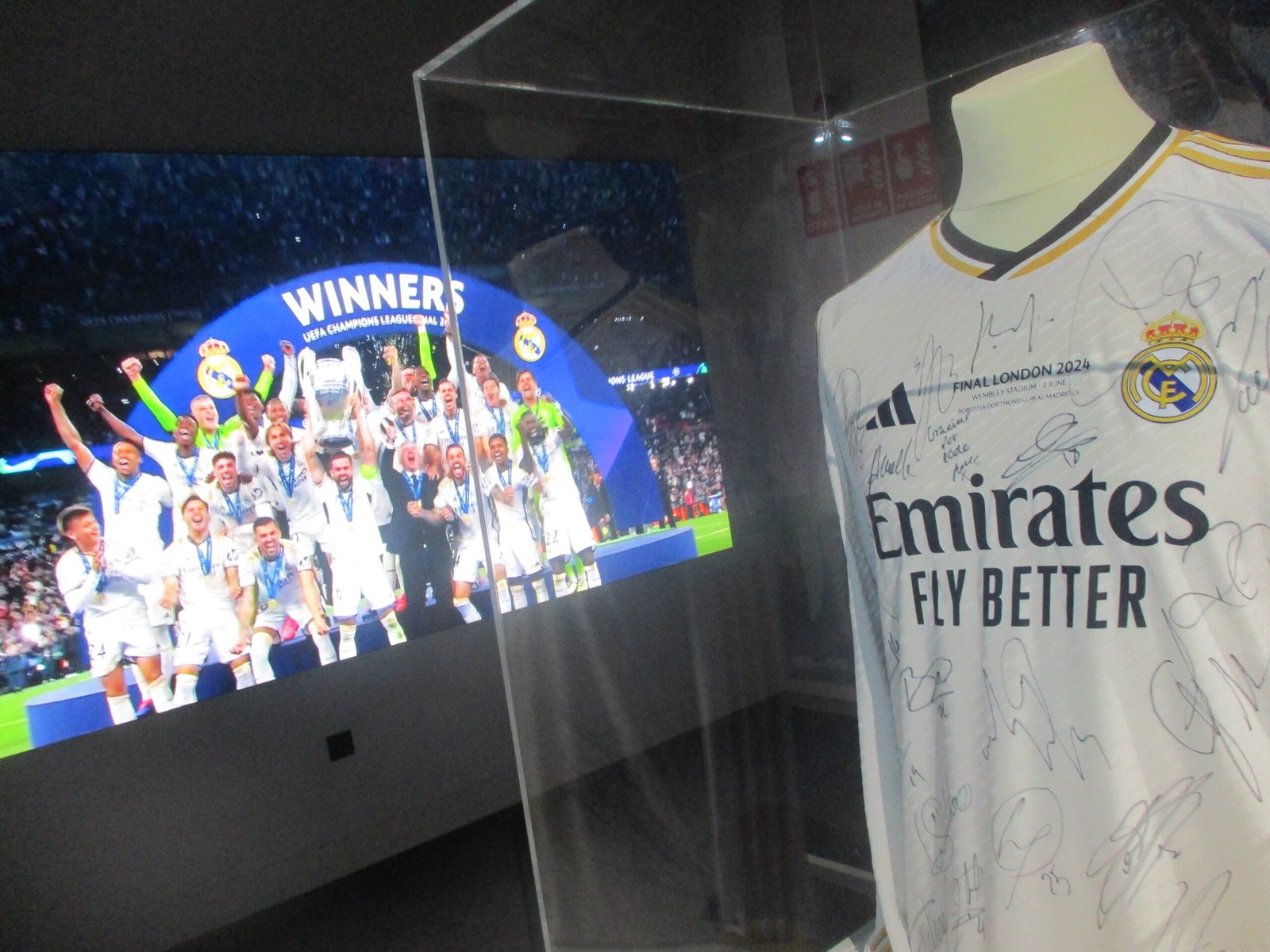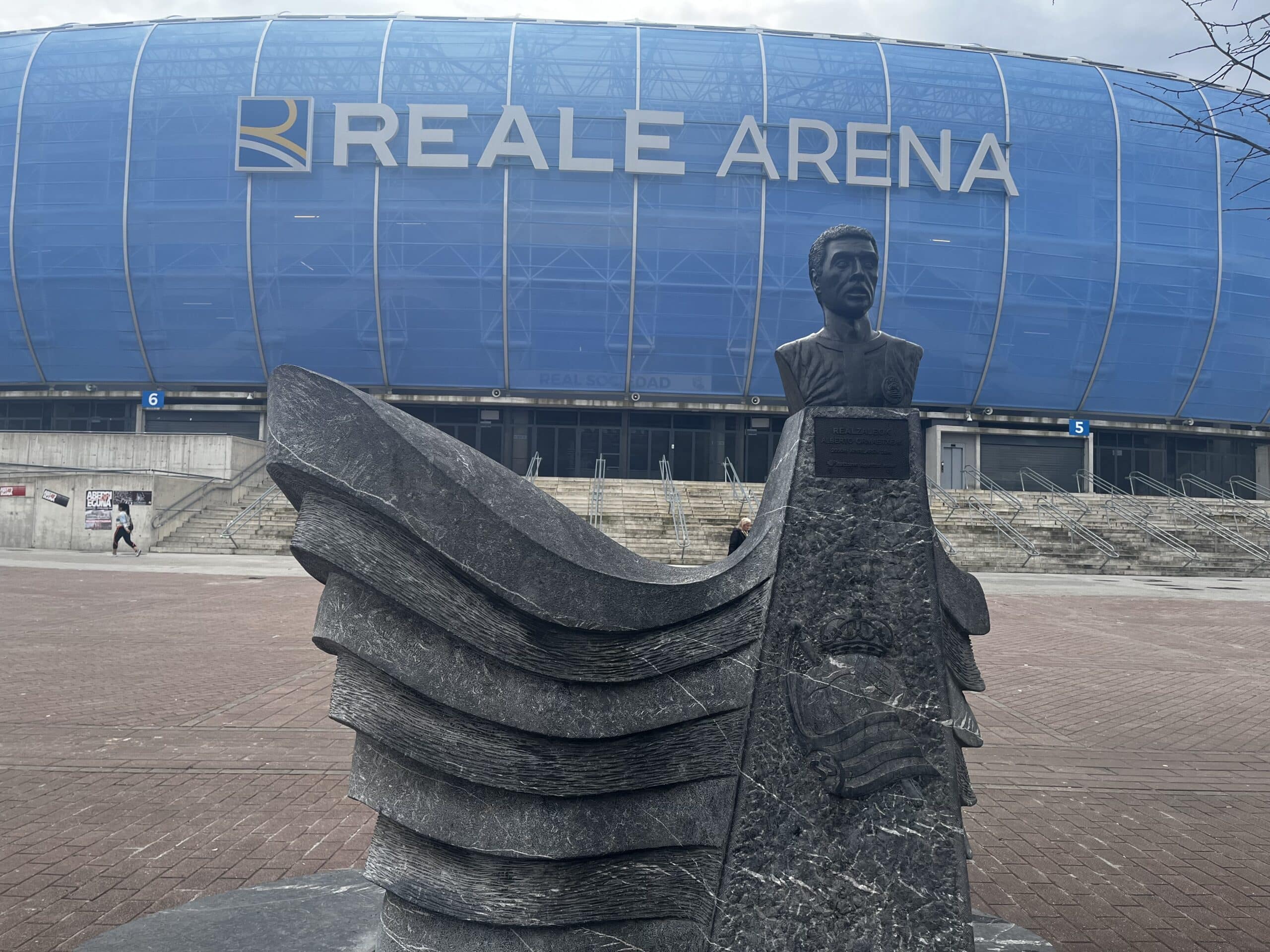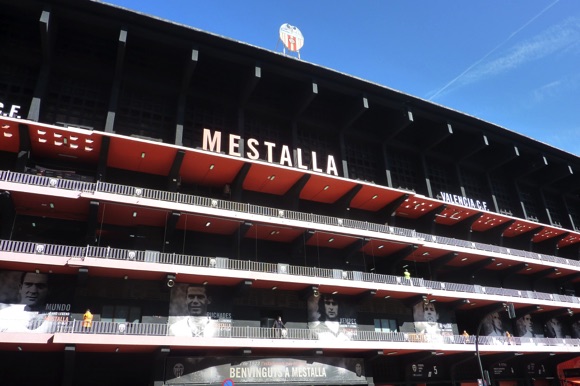A fan’s guide – the club from early doors to today
The surprise package of the 2023-24 season, Girona FC needed nearly 90 years to reach the top tier, and the campaign in question was only the club’s fourth in La Liga. But a 4-2 win at Catalan rivals Barcelona in December 2023 put the Blanquivermells at the top of the league, an unthinkable scenario before the arrival of the City Football Group six years earlier.
In 2017, shortly after Girona had claimed a first-ever promotion to the Primera, the Abu Dhabi subsidiary behind Manchester City, Melbourne City and several others around the globe, purchased 44.3% ownership in the club. The same percentage was owned by Girona Football Group headed by Pere Guardiola, brother of Pep and a major football agent.
The squad was soon bolstered by loanees from City, who duly came to Girona to play (and win, 1-0) a friendly. Soon these players could take advantage of a new training centre at the PGA Catalunya Resort golf complex south of Girona.
As for the fans, they still followed their team in the 14,000-capacity Estadi Montilivi, one of the most modest grounds in Spain’s top flight.

While Girona are bracketed with Manchester City and the Guardiolas, they keep their feet firmly on the ground. In many ways, they remain the same local club which has spent more than half a century in Spain’s third tier.
Founded in the first flourish of Catalan nationalism on the eve of the Second Spanish Republic in 1930, and following the debt-ridden demise of the previous Unión Deportiva Gerona, Girona FC already had a ground to move into. Erstwhile home of UD Gerona, Camp de Vista Alegre had been unveiled in 1922 and would serve the city’s new flagship club until 1970.
Though Girona initially sailed high, reaching the Segunda and the play-off stage for further promotion in 1935-36, the Spanish Civil War not only ended football for three seasons, it swept aside Catalan ambition. Underfunded Girona began long decades in the second, third and, by the 1980s, fourth tiers. In the late 1990s, it was even the fifth, a few hundred faithful gathered at the Estadi Montilivi, the municipal ground built in the far south-east of town near the university complex.

Gradual improvement came in the early 2000s, as young football fans around Girona, outnumbered by basketball ones, were walking around town in replica shirts: FC Barcelona ones. The most popular and glamorous club on Earth was only 100km from Girona, and hoovering up all local support and disposable income.
After Girona achieved a second promotion to the third tier in four years in 2007, they duly brought in Aragonese manager Raül Agné, effective but aloof. Refusing to learn Catalan – he would walk out of a press conference in 2011 for not speaking it – the former Girona centre-back from the early 1990s used strict methods for the club to gain promotion from the Tercera in only one season.
Experienced goalkeeper, Venezuelan international Rafa Ponzo, only lasted another season after that, Agné leaving halfway through the 2009-10 campaign, though Girona stayed up in the Segunda, equalling their previous stay of 60 years earlier.

But rejoining the professional game after so long had come at a price, and pretty soon the club was struggling to make salary. The sale of Girona to Argentine Ricardo Pini in 2015, soon after he failed to buy St Mirren, was a false dawn, the deal foundering before being picked up by Pere Guardiola. Pep’s brother, acting as the go-between for French group TVSE Fútbol, for the 80% share of the club, but was pretty hands on when it came to hiring a president, former Alavés right-back Delfí Geli.
Starting out his career playing for Girona, gaining caps for Catalonia and Spain, Geli is best known for a contribution he’d rather not remember, the clip off his head that settled the 2001 UEFA Cup Final, after 116 minutes and eight goals. The ninth, an own goal, made it 5-4 to Liverpool.
Like Geli, sporting director Quique Cárcel was a product of Barcelona’s blue-chip academy La Masia, this midfielder going on to spend a decade in Catalonia’s regional leagues. He stayed at his last club, L’Hospitalet, in the role he would soon assume at Girona, his skill at team-building allowing L’Hospi to be knocking on the door of the Segunda for the first time in half a century.

Both Geli and Pere Guardiola realised that establishing Girona’s popularity among locals, to stem the tide of Barça fans, was paramount. They also knew that a first promotion to the top tier was within their grasp.
In 2013 and 2016, Girona fell at the very last hurdle, losing play-off finals to Almería and Osasuna. In 2015, with nothing-to-play-for Lugo to beat at the Montilivi on the last day, Girona conspired to concede a last-minute winner by the visitors. Automatic promotion going to Gijón thanks to two more goals scored over the course of the season, the Blanquivermells took their frustration out on Zaragoza in the away leg of the play-off semi, a comprehensive 3-0 win.
The Aragonese then came to Girona, went 3-0 up on half-time and scrapped out an unlikely aggregate victory on away goals. Few teams have ever snatched defeat from the jaws of victory as agonisingly as Girona that season.
The manager who had to pick his players up afterwards was Pablo Machín. His career as a full-back curtailed by injury at the age of 23, this was a man who knew what disappointment tasted like. Machín kept a buzz going around the Montilivi despite its now limited capacity of 9,200, Girona shifting from mid-table to a months-long slot in second place with the highest goals-for tally in the Segunda.

Most were provided by much-travelled Inter loanee Samuele Longo, whose stay proved short but decisive. Promotion fever swept Girona, festooned with red and white as the City Football Group doubled down on a previously tentative satellite arrangement of fielding young players in Girona.
With Pep Guardiola now in charge at City, Pere had been pressing for a more permanent arrangement. CFG duly bought TVSE’s majority shareholding in August 2017. Girona were now part of a global network of interlinked clubs, from Melbourne to Montevideo.
Temporary seating had pushed the Montilivi’s capacity up to just over 13,000 as the stadium packed for the visit of Atlético Madrid for Girona’s top-flight debut. The stage was set to showcase the heading skills of experienced Uruguayan striker Cristhian Stuani, a recent signing from Middlesbrough, whose brace set up a 2-2 thriller that also featured a first ever red card for Antoine Griezmann.

Another 19 from Stuani kept Girona mid-table but the 19 league goals in 2018-19 weren’t enough to stave off relegation. In the Segunda, still served by playmaker Àlex Grenell, the prolific Stuani ran riot, including a goal in each leg of the promotional play-off semi-final against Almería.
The final against unfancied Elche saw disaster after disaster, with Stuani dismissed on the hour and a solitary decisive goal from the visitors’ Pere Milla on 90 minutes. A year later, 2-1 up from the away leg, Girona contrived to let a ten-man Rayo hold on to a 2-0 lead at an empty Montilivi, pandemic restrictions again meaning that fans were put through play-off agony on their TV screens at home.
Initially, the arrival of former Rayo Vallecano midfielder Míchel as coach in July 2021 had a negative effect, Girona losing six games in ten and looking more like relegation candidates than ones shaping up for promotion.
Then Stuani, now captain, started banging in the goals once more, and former Manchester City squad player Aleix García began to assert his authority in midfield. Keeping faith with Míchel, who repaid the trust in him by learning Catalan, Pere Guardiola and team were rewarded for their long-term attitude with unbeaten runs that pushed Girona back into play-off contention.

A home defeat to Eibar was not the ideal start to the knock-out stage but an extra-time strike from substitute Stuani put Girona into a third consecutive play-off final. Still using the veteran Uruguayan judiciously, Míchel took his team to Tenerife needing to do one better than the 0-0 draw after the first leg.
A Stuani penalty broke the deadlock, before a curling invitation from Aleix García allowed former Hospitalet youth player, teenager Arnau Martínez, to put the result beyond doubt. Girona were back in the Primera.
Calling on the City Football Group’s global network, Míchel brought in Argentine Taty Castellanos, whose opening goal had helped New York City win a first MLS Cup in 2021. He was later joined by Ukrainian international striker Viktor Tsyhankov to allow Girona to more than hold their own in their first season back at the top.
A 0-0 draw at the Nou Camp was followed by a memorable 4-2 win over Real Madrid and redemption for Castellanos, who had missed a sitter in Barcelona. A fortnight later, he became the first player to hit four in the league against the Merengues for 75 years.

Girona then kicked on in the summer of 2023 as sporting director Quique Cárcel expertly moved new chess pieces into place. Striker Artem Dovbyk fitted in easily with fellow Ukrainian international Tsyhankov, sparkling Brazilian teenager Sávio claimed the limelight and 100-time Dutch international defender Daley Blind revived his flagging club career in a Girona side that suddenly looked very useful indeed.
A run of six wins on the spin was ended by a reality check at home to Real Madrid in September 2023, the crowd of 14,184 setting a new attendance record at the Montilivi. Girona regrouped, Aleix García put in the kind of performances that earned him a first full Spanish cap that November, and by December 10, the stage was set for Míchel’s men to set La Liga alight.
That stage was Barcelona’s lofty Estadi Olímpic, where the visitors put themselves top of the league by sweeping aside the previous champions in an awesome display that had Spain sit up and take notice. The Ukrainian duo combined to open the scoring before Spain U-21 international left-back Miguel Gutiérrez, from the Real Madrid academy, burst forward to put Girona 2-1 up, a statement-making goal if there ever was one.
At the back, Barcelona loanee Eric García passed and moved with an intelligence gleaned under Pep when at Manchester City. Any hint of a Barça comeback was rebuffed by Stuani, now 37, in stoppage time. The culmination of nearly a decade’s hard work by football-savvy individuals behind the scenes, the 4-2 triumph signalled serious title intentions by a club in only its fourth-ever campaign with the big boys.

In January 2024, Girona doubled down on this intent by seeing off Atlético Madrid 4-3, as a first-ever European qualification became closer to reality, a debut Champions League campaign, no less. With wonderful irony, it was a 4-2 win over Barcelona that sealed the deal, five rounds before the end of the season.
With Aleix García sold to Bayer Leverkusen for €18 million, Girona could afford to bring in Watford Young Player of the Season, young Colombian international midfielder Yáser Asprilla for the same amount.
An unfortunate defeat at PSG by a last-minute own goal didn’t bode well for Girona’s big debut in the Champions League, disappointment compounded by UEFA regulations limiting the capacity of the Montilivi to 9,721 – 2,000 places going to UEFA and the visiting club combined.
Though progress in Europe’s premier tournament looked unlikely as Girona prepared to welcome Liverpool and Arsenal, Michel’s men garnered enough league points in the autumn to keep Europe in their sights come May 2025.
Stadium Guide
The field of dreams – and the story behind it

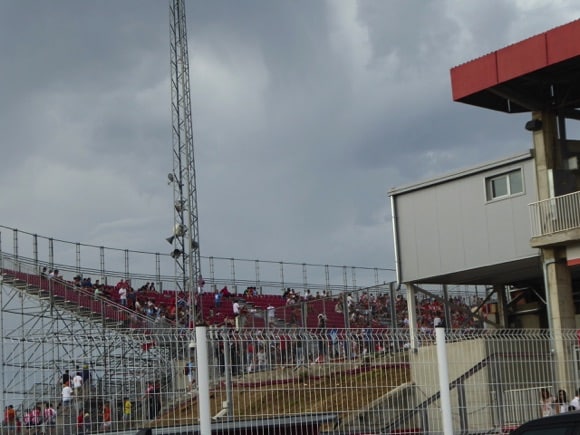



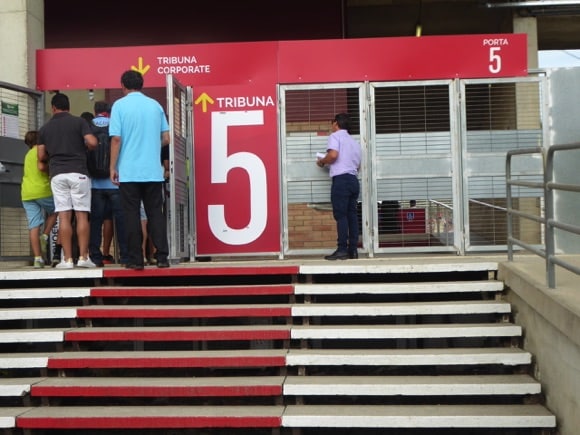
The most modest ground in La Liga, the Estadi Montilivi has been gradually expanded as Girona reached, then stayed in, the Primera. It wasn’t that long that capacity was as low as 9,000, though by September 2023, 14,184 were squeezed into it for the visit of Real Madrid, before the installation of the upper North Stand extended the total number of 14,624.
The stadium replaced the club’s previous home of the Camp de Vista Alegre in 1970, its name taken from the surrounding area south-east of town around the university quarter. A functional ground for a club whose ambitions were equally modest, this no-frills new-build featured a single main cantilevered stand ringed by half-a-dozen rows of open terracing.
Sold to the municipality as Girona sank down to the fourth, then fifth, tiers, the ground was left to crumble before the club reached the Segunda in 2008. The Montilivi was converted into an all-seater, on three sides at least, the main stand modernised and open seating provided behind the north and south goals.
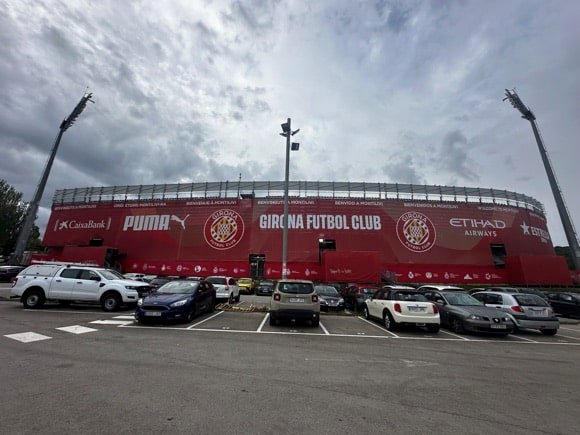

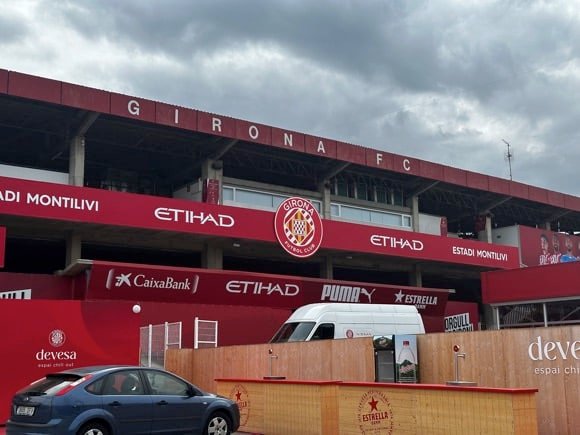
The east side or Grada Lateral, which had fallen into disrepair, was roped off until it, too, was installed with seating in 2010. This pushed capacity to just over 9,000.
Before Girona’s debut campaign in La Liga, the Grada Lateral was extended with a temporary stand of 2,000 seats, and the same was added to the Gol Norte. The present-day capacity was reached by the opening of the 1,000-seat extension to the Grada Gol Sur in 2018.
Visiting supporters are allocated some 300 places in a corner section squeezed between the Gol Norte (Inferior E) and Preferente (Inferior A), accessed through Gate 2 where Carrer Universitat de Girona meets Avinguda de Montilivi.
Note that for the Champions League campaign of 2024-25, UEFA capped capacity at just under 10,000, with 700 tickets going to the visiting club.
getting here
Going to the stadium – tips and timings
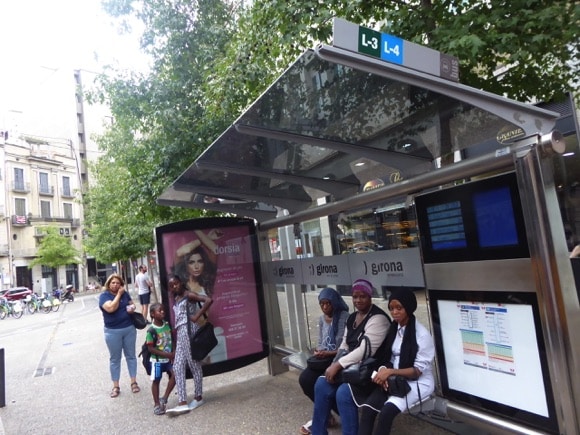
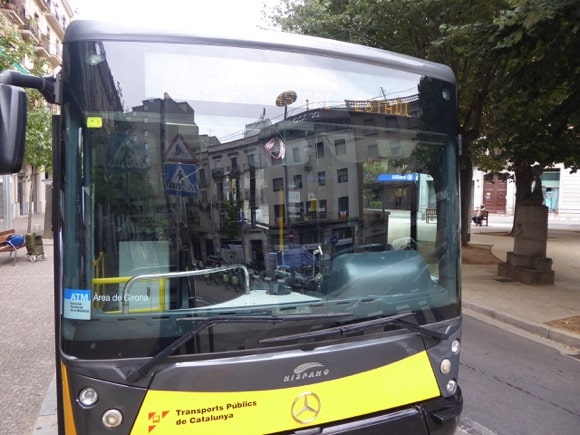
The stadium is way south-east of town, and too far to walk from the historic centre. Two buses, 8 and 11, head to the UdG university area of Montilivi from town, setting off close to Girona’s adjoining bus and train stations.
The 8 sets off every 30mins from c Creu/c Emili Grahit, to the right as you exit the station, taking 10mins/8 stops to reach UdG-Dret, the law faculty on the east side of the stadium a five-minute walk away.
The 11 sets off every 20-30mins from c Creu/C Migdia, a little further away along Carrer de la Creu, 9 stops from c Puigsacalm 10, the nearest stop to the stadium 10mins walk away, straight down Avinguda de Montilivi. Services run into the evening in both cases.
getting in
Buying tickets – when, where, how and how much
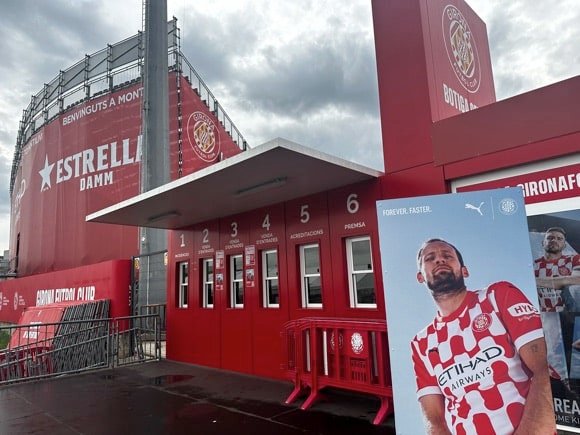
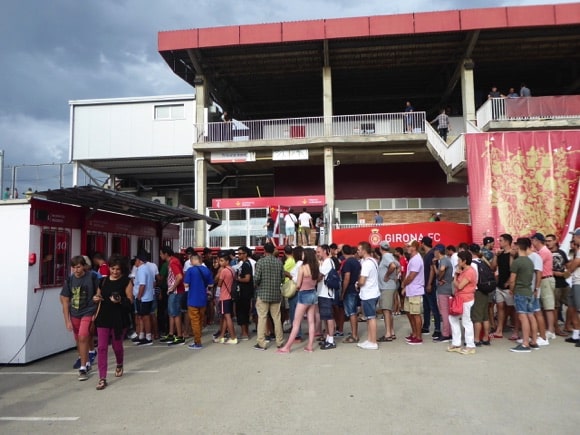



With attendances close to the modest capacity of 14,624, tickets are always best sourced online, for most home games in the season. Dates and times are confirmed for specific matches nearer the time. Season-ticket holders are capped at under 10,000, so get in quick and you should be lucky.
Generally, there will be a few seats available in the Tribuna Superior opposite the main stand for around €70, and more just below the press box in Preferente Superior B1 and B2 at around €60.
If the opposition isn’t too attractive and you’re well in advance, you should also find places in the Gol Sud or Nord for around €35. Seats over the corner flag in Gol Nord/Sud Lateral A are €40 or so.
Buying in person shouldn’t be impossible. The club office opens Mon-Fri 9am-2pm, 3pm-6pm (Friday before match days, mornings only), email enquiries to info@gironafc.cat.
what to buy
Shirts, kits, merchandise and gifts
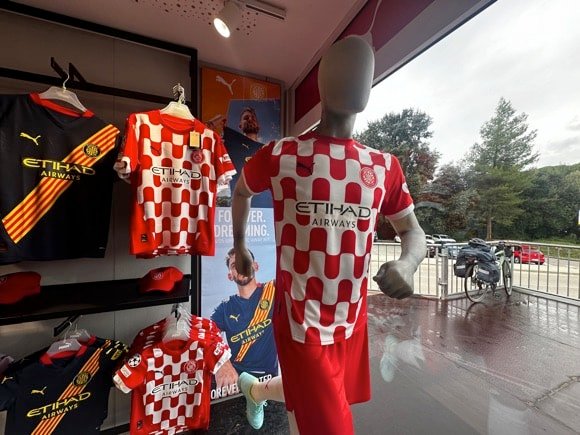
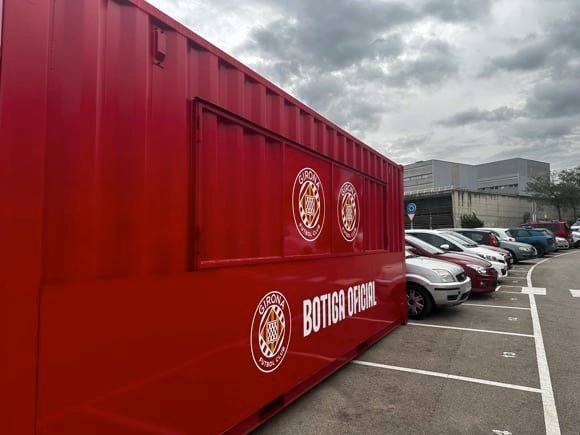

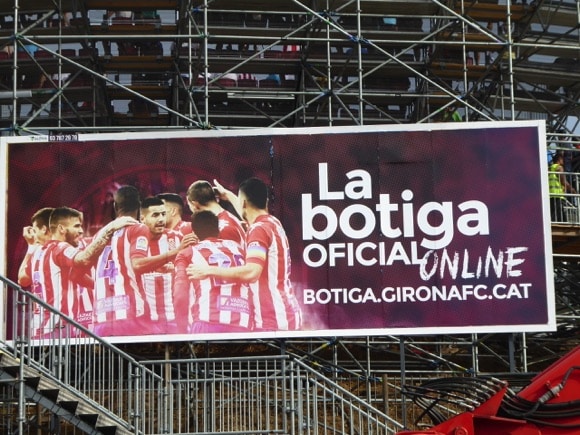
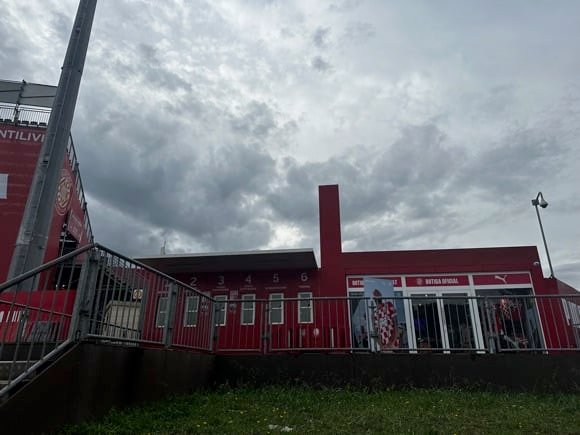

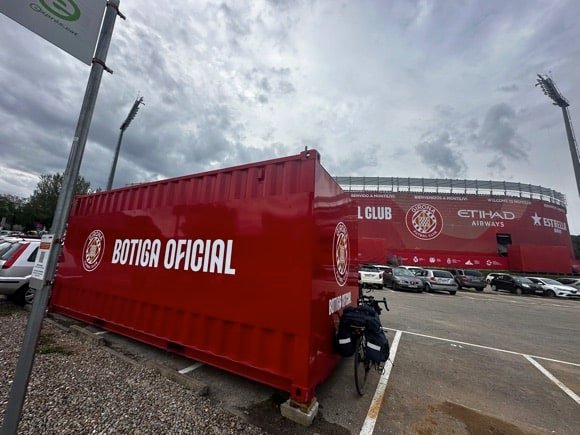
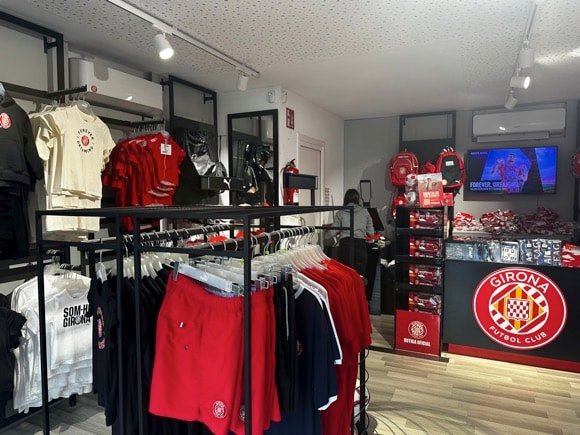
The Botiga Oficial Girona FC (Mon-Fri 9am-8pm, match days) is on the east side of the stadium, on Avinguda de Montilivi. The current iteration of Girona’s home shirt sports a blue V-necked collar, red wings and sleeves, and red stripes on white, while second choice is white with light-blue trim.
Accessories include ‘Orgull Gironi’ T-shirts, expressing pride in Girona, classic bobble hats and kids’ hoodies bearing a likeness of the club mascot, Sisa the…fly. Yes, Girona are surely the only club in the world whose talisman is the humble (and rarely celebrated) housefly, whose legend is linked to the French raid on Sant Fellu’s Church in 1286. A swarm of flies repelled the invaders, assuring the insect’s place in local lore.
Where to Drink
Pre-match beers for fans and casual visitors
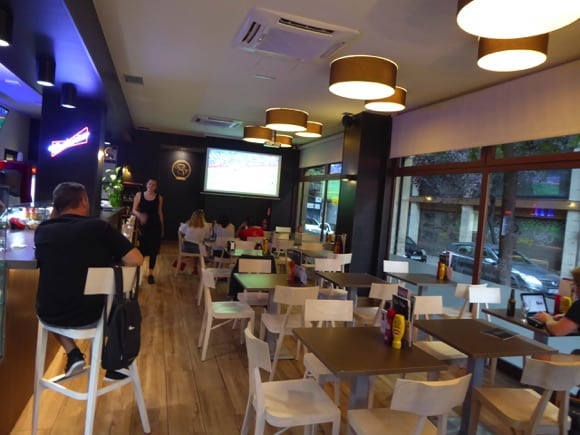


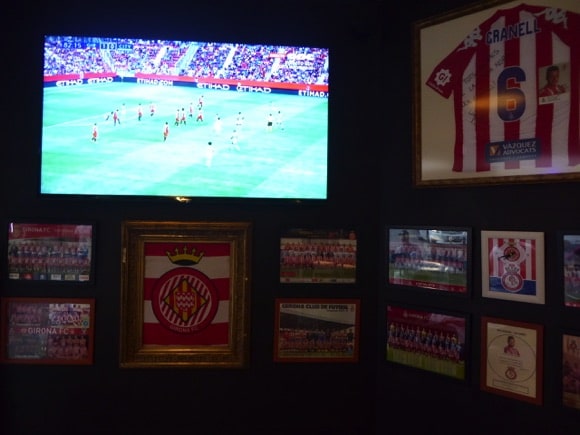


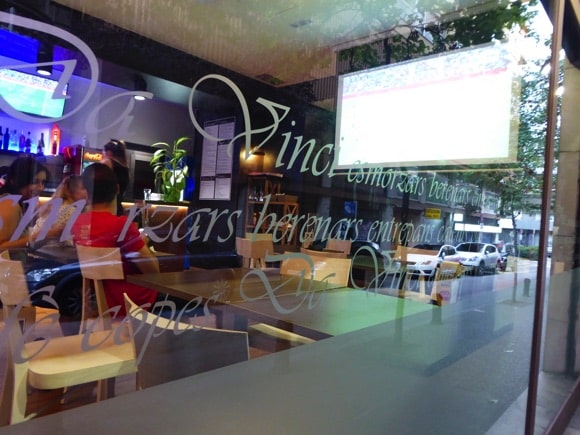

In the city centre, at Gran Via de Jaume I 30 near Plaça de la Constitució, Da Vinci is the home of Girona’s Penya Nord Alex Granell fan club, which is why it screens games and displays GFC iconography. Superior food allows you a quality fill-up before you head down to the stadium.
Just beyond the city centre, towards the stadium at Carrer de la Rutlla 170, the Bar Pencil would be completely passed over as just another tapas place were it not for its long-term Girona connection. Here, in the earlier 2000s, players would gather after training to talk tactics and perhaps spin a few games of table football.
The futbolín may be gone – it’s actually set up in the home dressing room at the Montilivi – but the GFC flags remain, the tapas selection as tasty as ever.
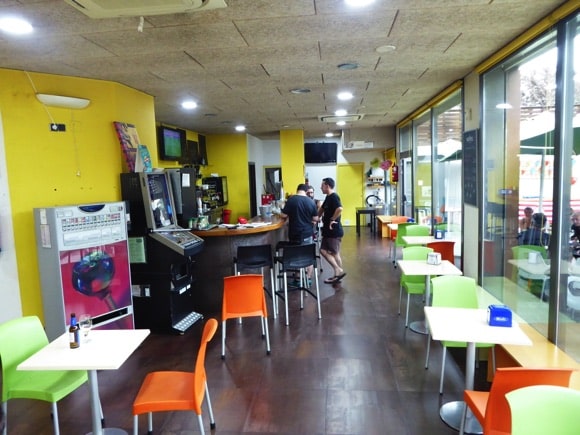

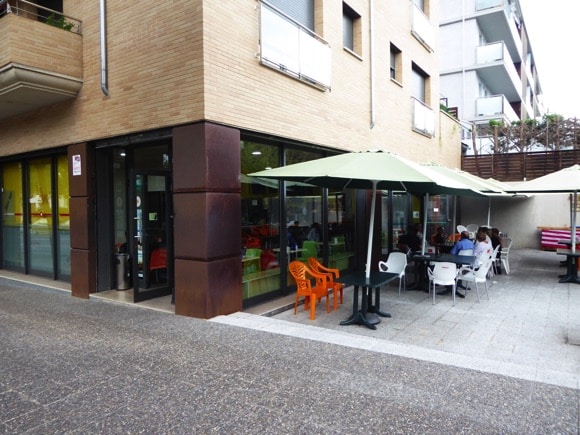

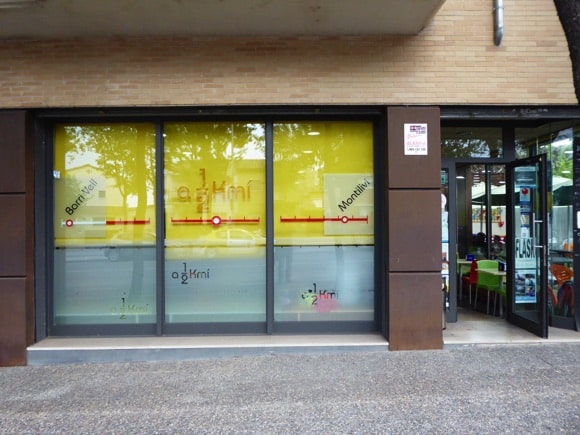
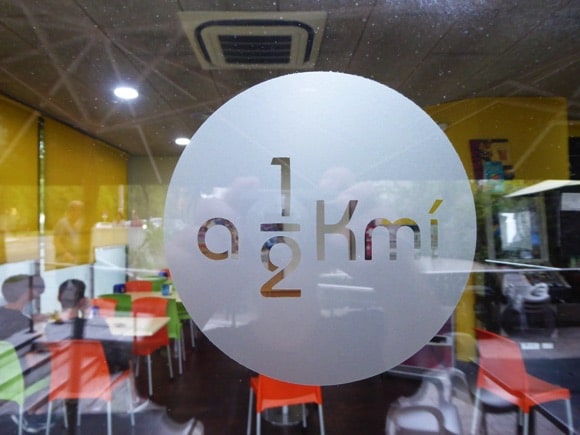
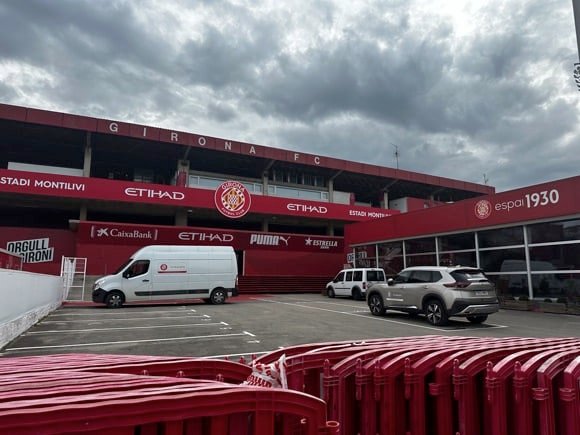

The main pre-match bar is exactly 500 metres from the stadium. This is because A ½ Kmí is named after its distance from the Montilivi, some ten minutes’ walk further south on Avinguda de Montilivi.
Actually, the name is somewhat ambitious, as house No.35 is probably 750 metres away from the final destination, but popping in here is part of everyone’s match-day ritual. The sunken terrace is always buzzing, there’s a back courtyard, too, and you’ll see a scattering of away fans raising glasses of Estrella or even Tennent’s in the late afternoon sun.
Over at the stadium, VIPs have been able to take advantage of the hospitality in the Espai 1930 Lounge behind the Main Stand, a convivial experience praised by the experts at the luxury football travellers at The Padded Seat.

